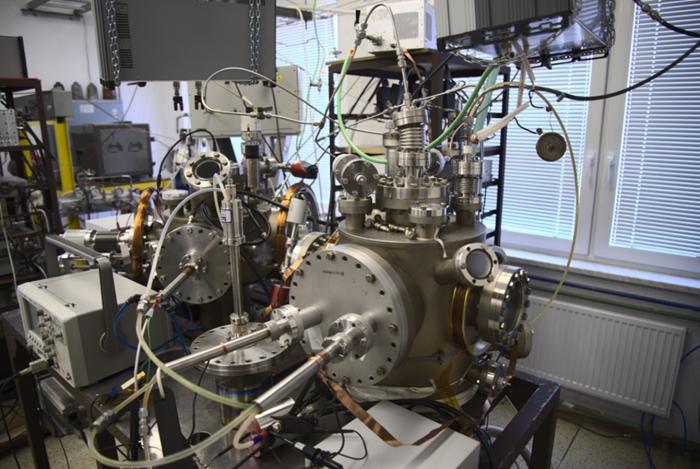Maximize efficiency and minimize costs in the production of hydrogen using solar decomposition of water – this is what a team of scientists led by Zdeněk Hubička from the Institute of Physics of the Czech Academy of Sciences of the Czech Republic is trying to do. The aim of the research is to cover hydrogen-producing equipment with a light-sensitive film with perfect properties so that when lighted it would produce the highest possible amount of this gas. Thanks to its properties, hydrogen has great potential to replace natural gas.
To achieve optimum performance of the device, scientists will cover the surface of special glass with an electrically conductive surface with a thin film of complex oxides. They will use the method of so-called pulsed reactive magnetron sputtering. It involves application of thin films using plasma and strong magnets. The advantage of such applied films is the ability to convert incident light into electric current, which produces hydrogen gas in their surroundings. In addition, they are very stable and efficient throughout the entire process.
"With regards to the current clean energy requirements, our research acquires far more strategic dimensions. We believe that we will be able to find the ideal material for covering the surface of anodes and cathodes and determine the optimal conditions for its application, "said the leader of the research team Zdeněk Hubička and added: "In the future, our research could, in collaboration with a private sector partner, lead to the preparation of a large-scale plant for the commercial production of hydrogen through the solar decomposition of water."
Based on experiments and calculations, in which Hubička's team also participated, the scientists created a model of an ideal device with sufficient stability and strength of photocurrents. It should be able to produce the maximum possible volumes of hydrogen. So far, it seems that the most suitable materials for covering the surface of its electrodes are mixtures of complex oxides of copper and iron. These are chemically resistant and at the same time available on Earth in large quantities, and therefore cheap for series production. The research now focuses mainly on conditions that need to be ensured during pulsed reactive magnetron sputtering. These are mainly the plasma temperature, the temperature of the surface the material is applied to, the optimum gas pressure and also the energy of the electrically charged particles in the plasma of which the resulting applied film is then composed.
Scientists from the Institute of Physics have at their disposal a unique modification of the HiPIMS plasma device, in which a plasma discharge can occur at very low pressures and at the same time create energy beams of ionized particles that do not collide with atoms of gas. Such particles thus have a higher energy, which leads to a more efficient crystallization of the applied material, and the film then has better photochemical and electrical properties.
It is well known that, compared to other gases, hydrogen has a high combustion energy, and thus a great potential to replace natural gas both for obtaining thermal energy and for the production of electricity. Hydrogen, which is also used as an alternative fuel source for cars, has so far been produced mainly from natural gas.
Experts from the Institute of Physics are cooperating on the project with a team from the University of Chemistry and Technology in Prague, whose experts provide the necessary measurements.
